Sewing Around the World
Sewing and textile arts have been a vital part of cultures around the world for centuries, with each region developing its own distinctive techniques, materials, and motifs. From the intricate Indian embroidery that features mirrors, beads, and vivid threads, to the minimalist and geometric beauty of Japanese sashiko, stitching styles reflect the heritage, environment, and values of the people who create them. These practices were often born out of necessity-mending clothes, repurposing fabric-but evolved into artistic expressions and cultural storytelling.
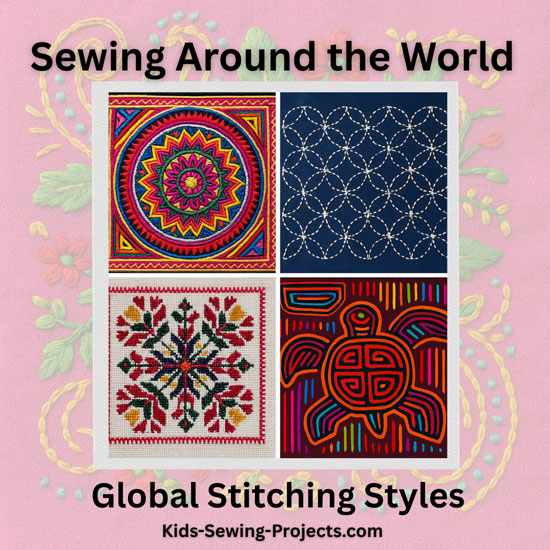
Sewing Materials Available

Let's go global! Explore traditional stitching styles and textile arts from around the world. Peruvian weaving, for example, showcases bold colors and patterns that echo the Andean landscape and spiritual traditions, while African kente cloth uses vibrant, handwoven strips of fabric to represent identity and status. In Eastern Europe, cross-stitch motifs often carry symbolic meaning and are passed down through generations.
Exploring global stitching styles gives young sewists the opportunity to appreciate the beauty and diversity of worldwide craft traditions and encourages them to incorporate inspiration from other cultures into their own creative work. It's a wonderful way to learn geography, history, and design--all with a needle and thread!
- Japanese Sashiko - decorative mending using geometric stitches
- Indian Embroidery - bright colors and mirror work
- Peruvian Weaving - rich textures and ancient
patterns
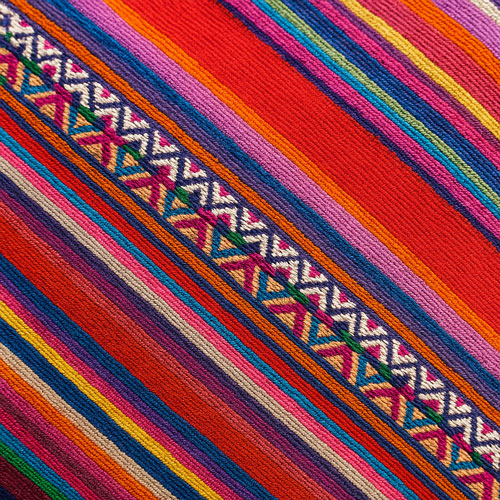
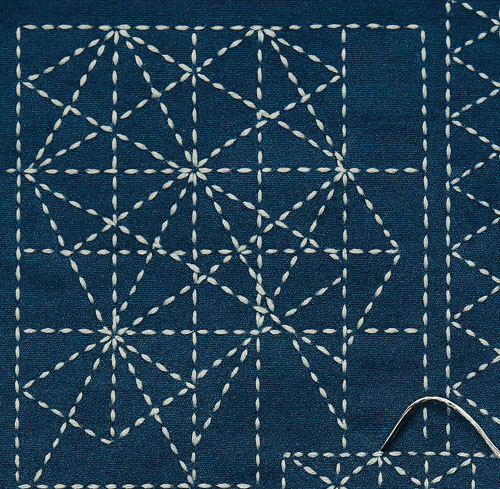
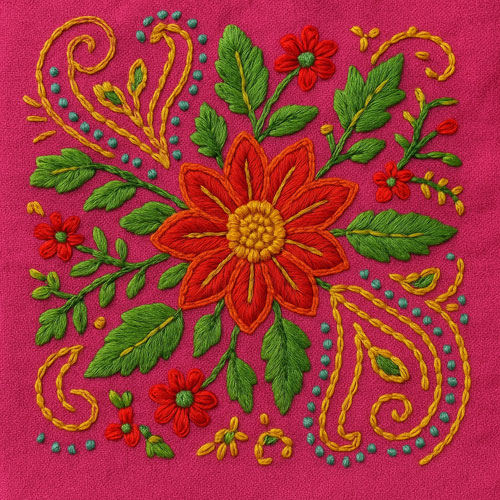
Sewing Around the World - More Global Stitching Styles
1. Hmong Embroidery (Southeast Asia)
- Origin: Vietnam, Laos, Thailand
- Style: Bright, intricate patterns, often geometric or floral, used in traditional clothing and textiles
- Fun Fact: Story cloths are embroidered to share legends and personal histories
2. Molas (Panama - Guna People)
- Origin: Guna (Kuna) women of Panama
- Style: Reverse appliqué technique layering colorful fabrics to make bold designs (often animals, flowers, or abstract patterns)
- Fun Fact: Each mola is hand-stitched and uniquely symbolic
3. Suzhou Silk Embroidery (China)
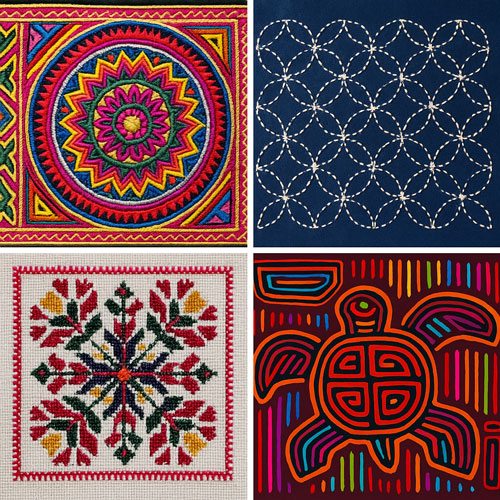
- Origin: China
- Style: Fine silk threads stitched to create realistic images, sometimes double-sided with different images on each side
- Fun Fact: Known for its lifelike quality-some look like paintings
4. Kantha (India & Bangladesh)
- Origin: Bengal region
- Style: Running stitch on layers of old saris or fabric scraps to make quilts, shawls, or blankets
- Fun Fact: Traditionally done by women as a way to recycle fabric
5. Ukrainian Vyshyvanka
- Origin: Ukraine
- Style: Embroidered blouses or shirts using red, black, or blue threads, often symbolic motifs
- Fun Fact: Patterns vary by region and are often passed down generationally
6. Palestinian Tatreez
- Origin: Palestine
- Style: Cross-stitch embroidery using geometric motifs
- Fun Fact: Designs can indicate a woman's village or marital status
7. Boro (Japan)
- Origin: Japan
- Style: A form of visible mending using layered indigo fabrics and sashiko-style stitching
- Fun Fact: Originally used by farmers and workers to extend the life of garments
Follow Kids Sewing Projects






